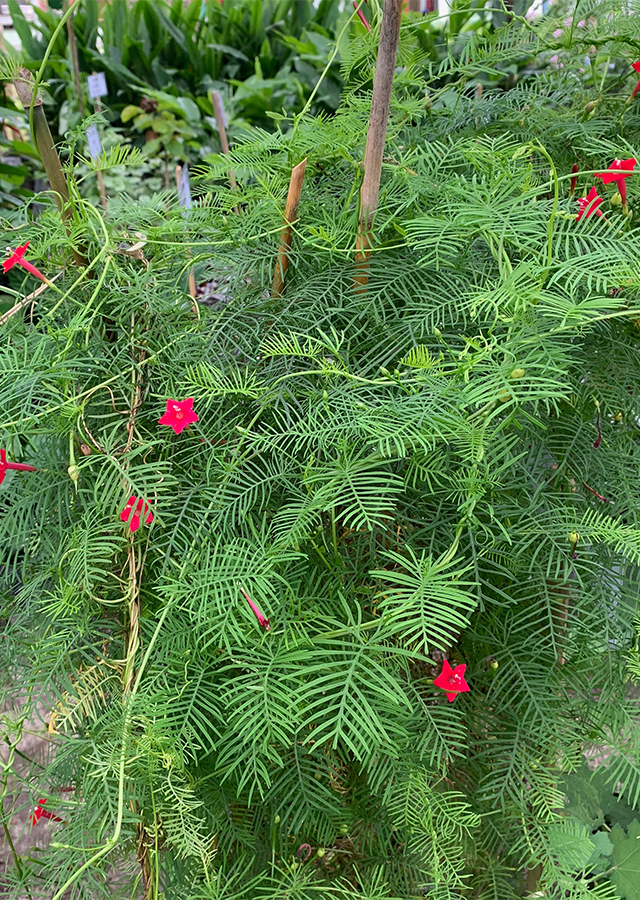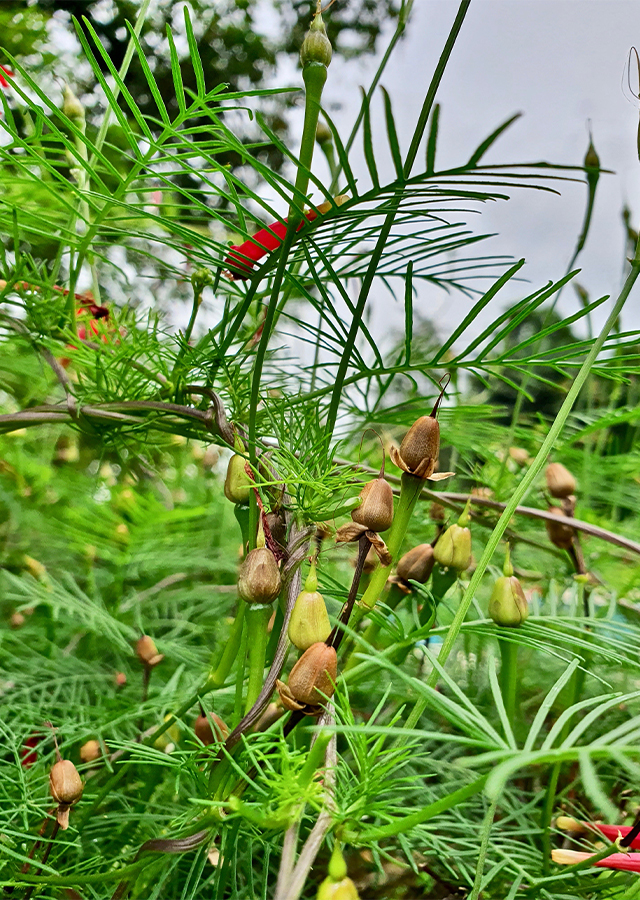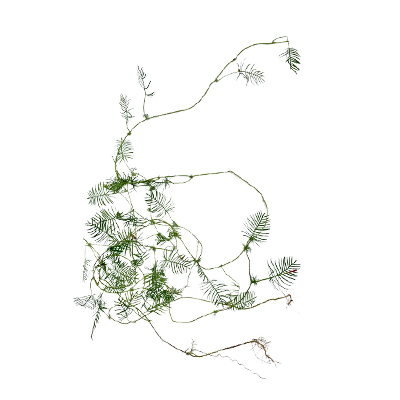Star Glory
Ipomoea quamoclit L.
Convolvulaceae
Location in our garden
Principal



Synonym
Incarvillea argyi H.Lév.
Clitocyamos pinnatifidus St.-Lag.
Convolvulus pennatifolius Salisb.
Habitus
Climbers. Annual fast growing vine, climbers, growing up to 3 m tall.
Part Used
Leaves
Seeds
Roots
Stem
Growing Requirements
Full Sunshine
Need Shade
Habitat
Wetland
Riverbanks
Forest
Overview
I. quamoclit is a fast-growing vine and invasive in a variety of habitats. Native to Mexico and Central America, introduced to many countries as an ornamental for its attractive foliage and bright flowers.
Vernacular Names
Rincik bumi (Indonesia), Cheveux de Venus (French), Cambustera (Spanish), Getphul (Bangladesh), Corda-de-viola (Portugalese), Bejuco de ciprés (Puerto Rico)
Agroecology
I. quamoclit can be found growing in moist thickets, the edges of moist and rain forests, mangroves, riparian areas, disturbed sites, and secondary forests. It is frequently abundant as a weed in cultivated areas and along roadsides at elevations from near sea level to about 1800 m. It is easily grown in average, medium moisture, well-drained soils in full sun.
Morphology
- Roots - tap root system.
- Stems - slender, diameter of 2 cm.
- Leaves - Leaves compound with 16-24 leaflets, basal pair of leaflets bilobed, simple and deeply lobed (pinnatisect) almost to the midrib. Very small finely divided leaves usually on the twig at the base of each petiole.
- Flowers - peduncles about 4-8 cm long. Pedicels about 1.4-2 cm long. Inner surface clothed in small flat glands. Corolla tube about 2.5-3.5 cm long.
- Fruits - ovoid, 5-7 × 5 mm, sepals persistent at the base.
- Seeds - usually 3 or 4 per fruit. elongate, about 5-6 × 2-3 mm, surface clothed in hairs and warty projections particularly around the hilum. Cotyledons folded with endosperm between the folds. Radicle straight, about 2 mm long.
Cultivation
- Propagated by seeds - Chip or soak seeds for 24 hours before sowing. Sow at 18 C in spring.
- Propagated by stem cuttings.
Chemical Constituents
Lauric acid, palmitic acid, stearic acid, oleic acid, linoleic acid, cyanogenetic glycoside, resin glycosides, jalapin, quamoclins I-IV, 7- O-β-D-glucopyranosyl-dihydroquercentin-3- O-αD glucopyranosi21.
Traditional Medicinal Uses
- The plant is considered cooling and purgative.
- Roots are considered an effective sternutatory.
- Studies have suggested antioxidant, antiproliferative, antidiabetic properties.
- In the Philippines, leaves are used as poultices for bleeding hemorrhoids. Crushed leaves used for carbuncles.
- In Queensland, used as purgative, as snuff, and for snake bites.
- In Spain, powdered roots used as sternutatory; pounded leaves used for hemorrhoids, ulcers and breast pain.
- In Brazil, aerial parts used as depurative or antibiotic.
- Kani tribe in Kerala, apply leaf paste over the throat for splinters.
- In the Antilles, roots are considered an effective sternutatory and the latex used for coryza.
- In Ayurveda, leaves are used for stabilizing the gravid uterus.
- In Siddha medicine, decoction of leaves and stems used for fever and diabetes.
- In Thailand, used for snake bites and hemoptysis
Part Used
Reference Sources
- Australian Tropical Rainforest Plants, 2010. Australian Tropical Rainforest Plants. Version 6.1 - CSIRO.http://keys.trin.org.au/key-server/data/0e0f0504-0103-430d-8004-060d07080d04/media/Html/index.html.
- Paul, Dipak & Sinha, Sankar. (2016). An update on biological activities of medicinal plant Ipomoea quamoclit L.. Tropical Plant Research. 3. 186–190.



